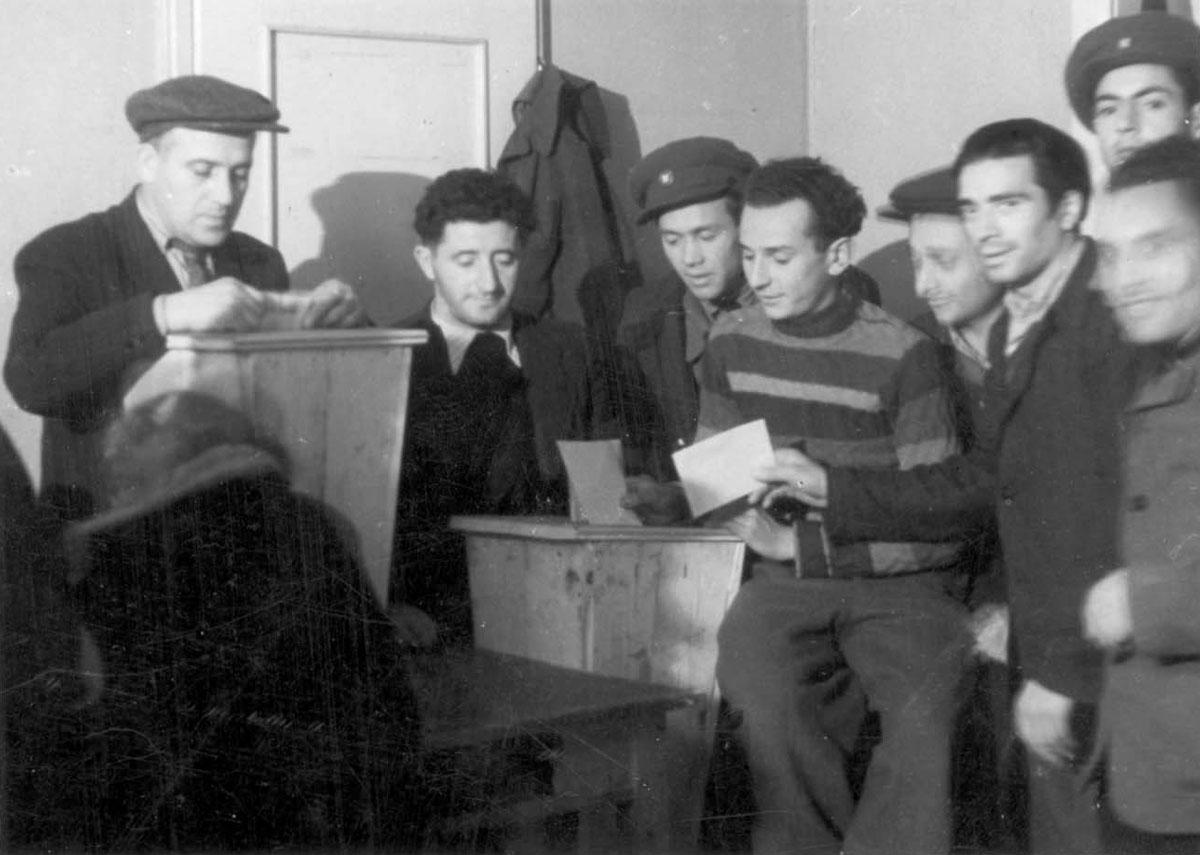At the end of World War II, in May 1945, 250,000 Jews, the survivors of the concentration camps, death camps and death marches, found themselves homeless. They gathered in camps in the occupied zones of Germany and Austria, primarily in the British occupied zone to the north and the American zone to the south.
In the displaced persons camp in Leipheim, Germany, near Munich, many Jewish refugees gathered, mostly from Eastern Europe. They were housed in buildings that had previously served the German air force. In the camp there were widespread cultural and social activities, including a soccer team, the screening of films, celebrations for the Jewish holidays, and gatherings for the entertainment of the youth. The camp had an office of UNRRA, the relief and employment agency of the United Nations, which assisted the refugees with their basic needs and in finding employment, as well as providing medical care and examinations. The Jews in Leipheim began to work in administration and assistance roles in the camp, working in the clothing and mail facilities as well as the resident card office.
The survivors in Leipheim began organize into political parties and reestablished the activities of the youth movements. Many youth served as counselors for the children in the camp. Refugees from different countries managed to converse in a broken Hebrew, friendships and relationships were established, and couples who met in the camp were married and built families, some of whom later moved to Israel. Leipheim also had an agricultural training camp whose graduates immigrated to Eretz Israel.
“The Central Committee of the Liberated Jews”, whose primary offices were located in Munich, close to Leipheim, was already established by July 1, 1945. The Central Committee did not have an independent budget, yet the Joint Distribution Committee supported it. The Central Committee adopted responsibility for life in the camps, including education, cultural activities, religious services, immigration, information assistance as well as basic essentials such as clothing and nutrition.
The Central Committee represented 175,000 Jews living in the DP camps in the American and British zones in Germany and Austria. It tried to obtain for the Jews in the camps an increased level of autonomous rule as well as pressuring the British authorities to change their policies regarding immigration to Eretz Israel. The Central Committee failed in its goal of representing all of the Jews in the DP camps, yet it still represented the largest faction of Jews in the camps. In September 1946, the Central Committee was recognized by the American occupation authorities as the “legal and democratic representative body of the liberated Jews in the American occupied zone”.
“The Central Committee of the Liberated Jews” was dissolved in December 1950. The DP camps, however, continued to function until 1957.
Yad Vashem Photo Archives 1486/225







